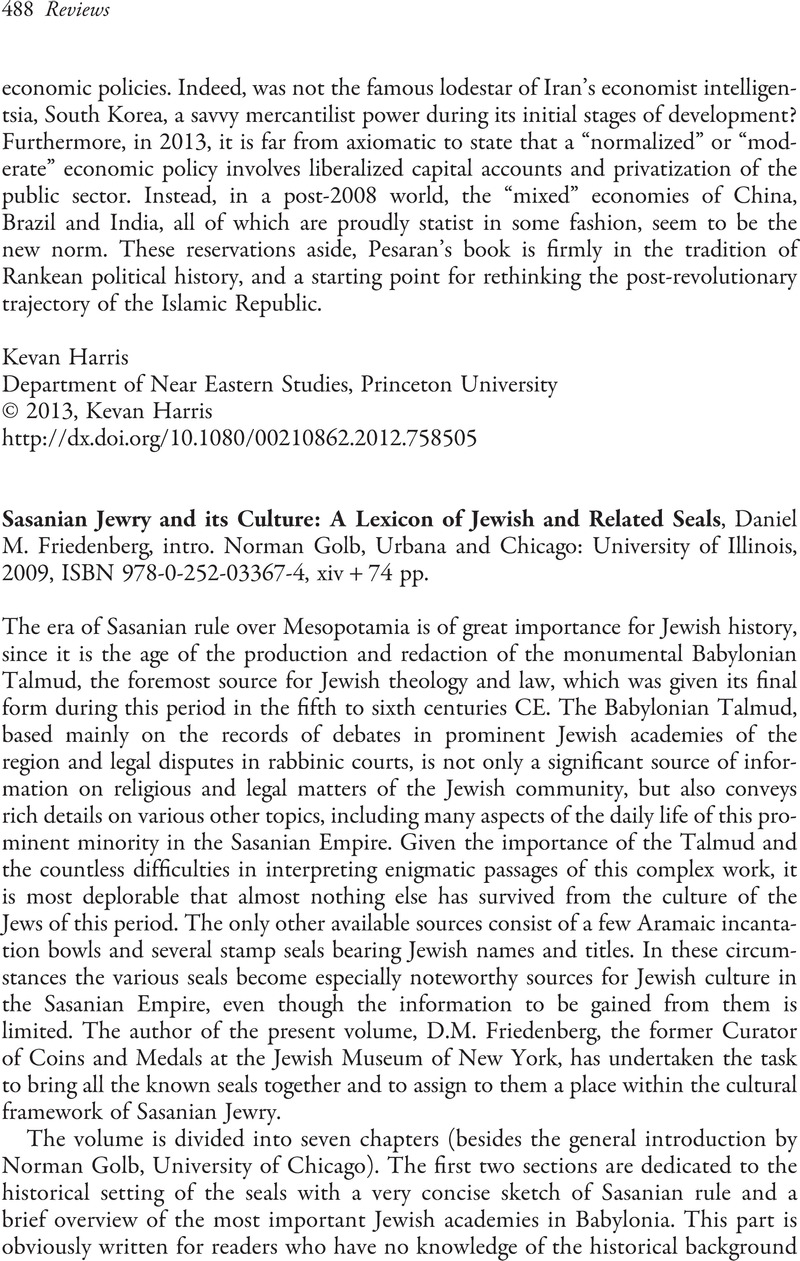No CrossRef data available.
Article contents
Sasanian Jewry and its Culture: A Lexicon of Jewish and Related Seals, Daniel M. Friedenberg, intro. Norman Golb, Urbana and Chicago: University of Illinois, 2009, ISBN 978-0-252-03367-4, xiv + 74 pp.
Published online by Cambridge University Press: 01 January 2022
Abstract

- Type
- Reviews
- Information
- Copyright
- Copyright © Maria Macuch 2013
References
3 For the calculation see Altheim-Stiehl, Ruth, “Das früheste Datum der sasanidischen Geschichte vermittelt durch die Zeitangabe der mittelpersisch-parthischen Inschrift aus Bīšāpūr,” in Archäologische Mitteilungen aus Iran 11 (1978): 113–16.Google Scholar
4 For an example see Macuch, Maria, Rechtskasuistik und Gerichtspraxis zu Beginn des siebenten Jahrhunderts in Iran (Wiesbaden 1993), 415Google Scholar, and commentary pp. 425–26.
5 An example of a Jew complaining to a State court because he had been illegally condemned by a Jewish court is given in the Bavli, Berakhot 58a; the use of the Middle Persian technical term pursišn-nāmag “transcript of criminal court proceedings” as a loan-word in the context of criminal proceedings in the Talmud also indicates that severe cases were tried in Sasanian, not Jewish, courts; see Macuch, Maria, “Iranian Legal Terminology in the Babylonian Talmud in the Light of Sasanian Jurisprudence,” in Irano-Judaica IV (Jerusalem, 1999), 98–100.Google Scholar
6 See Macuch, Maria, “On the Use of Seals in Sasanian Jurisprudence,” in Sceaux d'orient et leur emploi. Res Orientales X (Bures-sur-Yvette, 1997), 79–87.Google Scholar
7 In Au Carrefour des Religions: Melanges offerts a Philippe Gignoux, Res Orientales VII (Bures-sur-Yvette, 1995), pp. 239–55.Google Scholar


